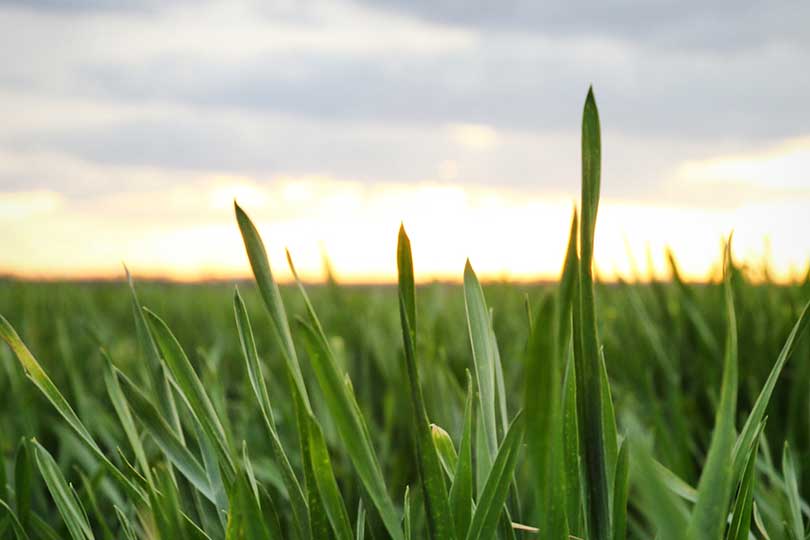By Shala Watson
Multimedia Writer
High supplies have pushed wheat prices down, forcing farmers across the U.S. to reduce their planted winter wheat acreage again.
After four consecutive years of world record wheat production, planted acreage has fallen to the lowest level since 1909 to 32.4 million acres, according to the latest U.S. Department of Agriculture (USDA) data.
Although there has been a trend in fewer planted wheat acres, many within agriculture were surprised the number was so low, considering in 1909 there wasn’t even much land in production.
Why the steep drop? It came down to price, according to Steelee Fischbacher, director of Policy and Marketing with the Texas Wheat Producers Board and Association in Amarillo.
Farmers aren’t making a lot of money with other commodities. They just aren’t losing as much as they are with wheat.
Texas wheat acreage had already taken a hit and dropped 12 percent last year due to inclement weather during the planting season. Low prices this growing season have caused farmers to pull back an additional 10 percent—adding up to a 22 percent decline over the last two planting seasons.
More than 6 million acres of winter wheat are typically planted in Texas, but this year it’s fallen to only 4.5 million, according to Fischbacher.
“We were expecting to see our number decline. I think that 4.5 is pretty low for what we were expecting. But that’s a number that we received from USDA,” Fischbacher said.
Alton Synatschk, a wheat farmer in Lamb County, has decreased his acreage by a quarter from last year due to low prices.
Many factors have driven his decision to decrease his acreage.
“Those acres are probably going to be converted to cotton, because there’s a little bit of a rally there,” Synatschk said in an interview with the Texas Farm Bureau (TFB) Radio Network. “The cotton price is a little stronger. Wheat prices have been this low before, but the alternatives weren’t as great.”
Besides converting acreage to cotton, Synatschk is integrating other management changes into his operation, like controlling fertilizer costs and seeding rates.
“It’s making things a little difficult, especially on the dryland wheat,” Synatschk said. There’s only so many things you can do to cut inputs. We’re doing all we can.”
Fischbacher said other competing commodities, specifically corn, were so low that feed wheat demand did not meet expectations. The industry is trying to increase the demand “to whittle away at some of the surplus that we have on hand.”
The wheat industry is working to get the wheat supply back on track through increasing exports to bring in some cash flow, according to Fischbacher.
“Our exports for this current marketing year are already surpassing what they did last year, and we’re only about halfway through the marketing year,” Fischbacher said. “So there’s some very good signs when we look at what we’re doing in terms of exports. But that has not changed where our price is at today.”
The payments farmers are currently receiving for wheat are low, closer to $3.00 or $3.30, Fischbacher said.
The reference point that’s in the farm bill for growers to be closer to profit is around $5.50 per bushel, Fischbacher noted.
“Anything above that level we think would be beneficial for our farmers,” Fischbacher said. “Obviously, the higher the better, but if we could get back to the $6 level, we would see those acres come back.”
The planting season started off well until a dry spell struck the Panhandle and other regions of the state. Recent rainfall, however, has helped the crop recover in some fields.
“It [moisture] was relative to start,” Synatschk said. “The beginning of September we had three inches of rain, but then we didn’t have anything after that until just recently.”
Synatschk said since the first of the year he has received about an inch and a half of precipitation. His crop is starting to come out of winter dormancy and is about normal for this time of year.
“We have had some recent moisture over the past month and so we really think that’s going to be beneficial,” Fischbacher said. “But when you start talking to farmers out there, it varies pretty greatly on what their wheat crop looks like.”
Wheat harvest in the South Texas corridor will begin rolling around April and continue

